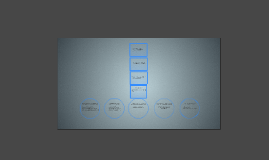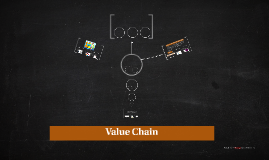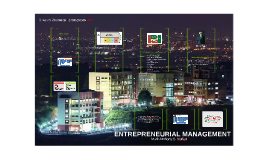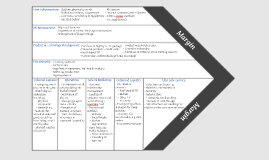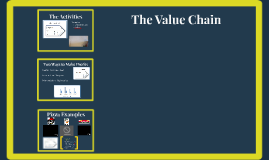Value chain
Transcript: ENTERPRISE VALUE Definitions: Financial Enterprise Value: - method to measure the company’s total value based on the equation below: - the takeover price of an organization presumes that it is bought. Business Enterprise Value:: - Can be measured as a result of intangible assets such as marketing and management skill, working capital, franchises, patents, trademarks, assembled work force, trade unions, operating agreements et cetera (Owens, 1998) Comparison of Financial Enterprise Value: Founded on March 1, 1938 by chairman Byung - Chull Lee in Taegu, Korea, with 30,000 won capital by focusing first on trading and Exportation. Beijing (Samsung, History Timeline, 2014). Known as Goldstar in 1957. It starts with the desire of the owner Koo In-Hwoi to invent and produce the first radio in Korea for the enjoyment of the customers. (LG Company Profile, 2014) RELATIVE COMPETITIVE ADVANTAGE Definition: Differentiation strategy will help an organisation to create certain market position and lead it to a sustainable long run (Porter, 1980) Four main industry value drivers: knowledge management, technology management, process management and relationship management (Russel and Taylor, 2014) Comparisons: COMPANY BACKGROUND SUPPLY CHAIN Value chain analysis 2) Samsung -Proposal system for those who wish to become Samsung suppliers through 3 steps (application, review and feedback processing, partnership) -Samsung is still Apple’s key suppliers for video processor chips although Apple is Samsung strongest competitor. 3) LG -Suppliers are selected through fair and transparent processes and support their operations by helping with business infrastructure development Founded by college dropouts Steve Job and Steve Wozniak on April 1, 1976 with a vision of changing the way people think about computer. Inventing a small and user friendly computer and they did (Richardson & Terrell, 2008). VALUE PROPOSITIONS THANK YOU FOR LISTENING ! 1) Apple -Customer-driven value (engage staffs from the value chain, understand demand cycles within ongoing product life cycles as demand shifts). -The introduction of first iPhone in 2007 - superior design and technological innovation (software systems iOS, iTunes) . -A recent launch of iPhone 6 and 6 Plus - larger screen, enhanced features and support for Apple Pay (Apple Annual Report 2014). 2) Samsung -Wireless connectivity and user-friendly interface which satisfy customers needs, they only ranked 2nd after Apple (Samsung Annual Report 2013). -Better in-class mobile security capabilities, Samsung KNOX-an Android-based solution. that protects mobile phones from data leakage and malware attacks. 3) LG -Focus on Business Infrastructure Development such as Enviromental, Safety and Health (ESH), Iit impacts on consumer spending on mobile phones as low carbon green management strategy helps to increase efficiency in the value chain. - LG allows fair trade compliance and labour policy to maintain fair competition rules and proper transaction standards throughout the value chain (LG Electronics Sustainability Report ). KEY STRATEGIC DIFFERENCES VALUE CHAIN ANALYSIS Different approaches utilised to efficiently integrate suppliers, manufactures, warehouses and stores to produce the final goods at the right quantities, right locations and right time to minimise operational costs while satisfying customers 1) Apple Depends on component, product manufacturing and logistical services provided by outsourcing partners located outside of the US mostly and had relationships with about 200 different companies in 2014. Presented by Jenny Mai, Indira Simanungkalit, Lorena Vilano. Definitions: - One of the important elements in value chain analysis, since it is widely used to understand the value of a product which can be obtained through several elements such as price, quality and location (Hassan, 2012). - Value propositions must be based on several key factors such as the organization’s knowledge of the customers’ benefit of the product, organization’s experience with a customer in on different occasions, and organization’s estimation of the value provided to customer (Keogh, 2008) Purpose: It is necessary for an organisation to be able to create a value proposition that helps the customer to buy and re-buy the products that are being offered in the market. Comparisons: MARKET OPPORTUNITY ANALYSIS







